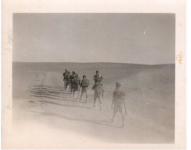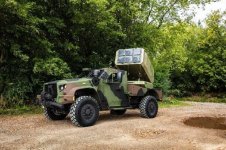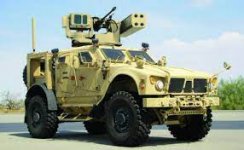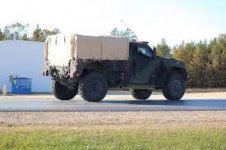FJAG
Army.ca Legend
- Reaction score
- 14,747
- Points
- 1,160
The argument I made was that tanks do not dominate anywhere above the tactical battlefield. A careful reading of those campaigns would suggest not.
Operationally, North Africa was as much about anti-tank weapons as it was tanks (see: CRUSADER - failure of massed British tanks). It was also about combined arms, and how not to do it (see: failure of British Jock Columns).
The Eastern Front was no different. Superior Soviet tanks could tactically dominate in 1941, when they outclassed anything the Germans could put in the field, but operationally (and strategically) the flawed execution of combined arms warfare meant it didn't matter how great a KV-2 or a T-34 was.
Your historical references do have me thinking because my research for our gunner book has me at the turn of the century where the Army is making the first tentative steps to converting it's rusting out Cold War army to the medium weight thing it has become.
My point here is that we were essentially experimenting with two concepts - on the one hand aggregation of sensors into an ISTAR company and on the other an aggregation of TOWs and ADATS and MGS into a Direct Fire System. Neither really panned out. Twenty years later our sensors did get better but I'm not so sure we ever achieved the degree of aggregation ever contemplated and DFS pretty much faded away. Afghanistan undoubtedly took our focus off the ball in a big way - but even that ended 11 years ago.
While we clearly haven't advanced the weapons' procurement process our doctrinal thought processes should not have stopped. Both the Navy and the Air Force seem to have some thoughts about where they are heading (albeit their processes [JUSTAS I'm talking about you] seem to be no faster than the Army's).
It's pretty clear to me sitting at home, long retired, that doctrinally we are much worse off then even during the decade of darkness. While LAVs have their issues they are heads and shoulders above the M113 and the Leo2 is much better than the C1 but we still haven't done anything about figuring out how to win the deep battle, how to deliver long range precision fires, how to counter the various air threats, how to fight the close in anti-armour battle or how to optimize the new capabilities coming out daily. It would seem to me that until we get a handle on how to actually participate in a heavy battle any thinking about what kit we want is a tad premature.
Quite frankly, I'm starting to think that one of the best things the Army could do for Force 2025 is to completely break up one of the CMBGs in order to create the numerous enablers that are needed on a modern battlefield. (or perhaps just one infantry battalion in each brigade and turn the remaining two and the armoured regiment into three proper combined arms battalions and a small but better designed cavalry regiment plus additional enablers) What's killing the Army is the high recurring cost of people. People are important but people without equipment and a doctrine are just a speed bump on the battlefield.








